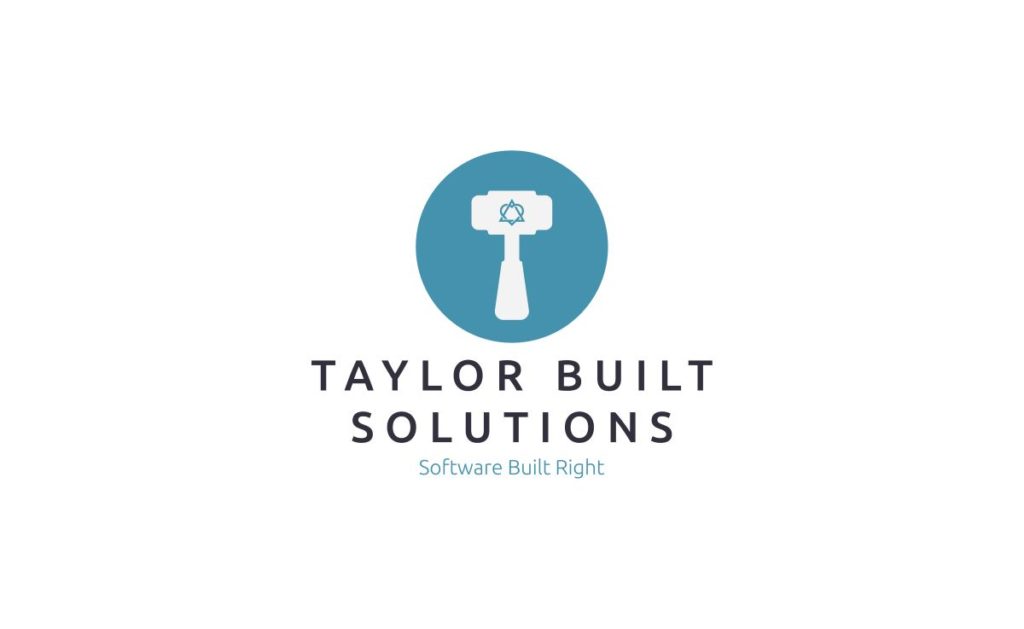
So you want to get a WordPress site up? One of the first issues you’ll have to deal with is where the website will be hosted. What does that even mean? What is hosting and what does it have to do with WordPress? That’s what this post is here to help you with: Understanding how to choose where your website will live and run; a.k.a where your WordPress website is hosted.
Disclaimer: Because I want to be responsible with you, my readers, I want to make you aware that the BlueHost and WordPress.com links below are affiliate links. It is my hope that these links will help this blog make a small bit of money toward hosting costs and, if I’m really hopeful, help provide some income that would let me make Taylor Built Solutions a full time gig.
What Is “WordPress Hosting” Anyway?
WordPress is, as described in a previous post, software that was makes the creation of a good looking and powerful website easy enough for a business owner who isn’t a software programmer. However, just like Microsoft Office, Photoshop, a computer game, or any other piece of software, it needs to run on a computer. It isn’t, however, something that you would run on your computer at home. WordPress needs to be run on a computer that is accessible from the internet, powerful enough to respond to all the visitors that will be coming to your website, and dependable enough to stay running 24/7/365.
This is where “hosting” comes in. There are a lot of companies in the world who make computers like these available to use to host WordPress. These companies provide a range of services all the way from providing an empty computer with nothing on it all the way to giving you a computer already setup with WordPress.
The rest of this post will describe the different forms of WordPress hosting and will, I hope, help you understand what will help you choose which type of hosting to choose. We’ll start with describing “shared hosting” (i.e. sharing a computer with other sites or not) and “managed hosting” (i.e. how many tools/services does the hosting provider provide to help you run and advertise your site).
Shared vs VPS WordPress Hosting
WordPress hosting comes in many forms. The services range from offering just a computer running Linux where you must install WordPress and any management tools you’d like all the way to computers that already have some management software installed and offer one click installation of WordPress. In all of these cases, however, you’ll likely have a blank WordPress slate and will be responsible for much of the WordPress setup.
You’ll notice that none of the things above have anything to do with being “shared”. Nor does it define what VPS is. The “shared” part of shared hosting is that your site will be on a virtual computer that shares space and computing power with other sites on a single physical server (aka really powerful computer). By having multiple sites share space on a single server the providers can reduce their costs to host sites and pass those savings on to you. However it also means that if another site on the server gets a rush of visitors that slows the server down your site may become slow to respond.
VPS is an acronym for “Virtual Private Server”. This is similar to shared hosting with the difference that you get your own virtual computer on the single, powerful, physical server run by the hosting company. This may sound like it isn’t any different that shared hosting as defined above. You’re correct to think this. The main difference is that the virtual computer you get will have more processing power and network bandwidth than you would otherwise get in a shared hosting environment. As such you’ll pay more for VPS hosting but you’ll have more room for your site to grow.
Don’t read this as a recommendation to purchase VPS hosting. Which one you choose depends on your need at the moment and I would talk through what your site needs with you before recommending one over the other.
What Do Hosting Providers Provide?
Before jumping into a description of “managed hosting” I would like to describe the basics of what you can expect a hosting provider to give you. The plans you’ll find range from computers with nothing on them all the way up to “full service” setups. Here are several examples:
Linode is a hosting company that offers virtual computers with very little on them. These are bare bones compared to managed WordPress hosting described below or semi-managed hosting from a company like Bluehost. This is the type of platform usually used by power user type folks who want to have control over everything that goes on the computer running their site. That being said, Linode does provide documentation on how to setup WordPress by hand or via their cloud manager with one click.
BlueHost, on the other hand, offers a shared hosting plan that has management tools, an easy way to install WordPress, and documentation to help you through it. The management tools made available will help you with the common items you’ll need to setup for a WordPress based site. SiteGround is another option that offers a very similar experience. These plans can be considered semi-managed since they have some of the benefits of managed hosting but are still provided on a shared server and are, thus, often cheaper and less performant than managed hosting.
Managed WordPress Hosting
Managed hosting can be considered the full service option for setting up a WordPress site. The benefits that managed hosting provides includes more tools setup for you out of the box and servers that are setup to securely run WordPress very quickly. Depending on the plan that you purchase and who you purchase it from you’ll find that you get varying levels of dedicated servers that aren’t shared with other sites. Examples of extra services that managed hosting plans provide are:
- Jetpack paid plans included in the hosting price
- Daily backups of your site so you don’t have to handle or pay for backups
- Integration with payment providers such as PayPal
- Priority support staff by people familiar with WordPress
You’ll find that some of the companies that offer cheap, semi-managed, shared hosting plans also offer managed hosting. The BlueHost link that I shared above will take you to a page that offers hosting for $3.95 per month you can see from this page that they also offer managed hosting starting at $19.95 per month (prices are from the time of writing of this post).
Services like BlueHost cater to a consumer/small business crowd. If you’re looking to host a larger site you’ll find services like Pagely that are tailored to handling medium business to enterprise size sites. For sites that are in between you can turn to a company like WPengine. In all of the cases, however, you’ll find that managed hosting is more expensive than shared hosting. The hope is, however, that you get what you pay for and you can pay for what you need.
For further reading and discussion there is a good description of both shared and managed hosting over at codeinwp.com.
WordPress.com VS WordPress.org
When starting to setup a WordPress site and picking a hosting provider there is a major point of confusion. What is the difference between WordPress.com and WordPress.org? Wait … there’s a difference?
WordPress.org
This post from BlueHost gives a good start on this topic. Because they do a great job at describing the differences I’ll give you the short version.
The folks at WordPress.org help maintain the actual piece of software that is WordPress. From this site you can find the software itself. There are resources to help you learn how to use the software, extend it, and even help make it better if you wish, What does this have to do with hosting? Nothing particularly; WordPress.org just offers the software, not hosting. They do, however, have a guide on where to find hosting.
WordPress.com
The folks from Automattic created WordPress.com as a way to make the use of WordPress easier. There are LOTS of services offered through WordPress.com but the main service is WordPress hosting. Automattic has set up the computers to handle many different types of websites built on WordPress from simple blogs written by a single person to giant websites hosting lots of content (like Time) to large e-commerce stores. Automattic also creates a lot of tools to make the experience of using WordPress smoother and richer. The tools that Automattic has created include:
- JetPack
- Akismet
- VaultPress
- Crowdsignal
Note that you don’t have to host your site at WordPress.com to use many of these tools. Many are created as plugins that are usable in WordPress hosted elsewhere. You may find that they work better at WordPress.com seeing as how they were made with it in mind but they are still useful elsewhere.
Sidebar on Website and Product Naming
One thing to point out here is that the similarity in names between the two websites and the name of the software (WordPress) leads to confusion. I want to make a couple things clear. First, WordPress itself is a free, open source piece of software. You don’t have to pay Automattic to use it and you can contribute directly to making it better. WordPress.ORG is the place you find this product. Second, though the naming is confusing and Automattic is a for profit company (which can make the naming seem intentionally misleading), they do contribute a LOT to the WordPress community (tools, guides, and development on the product itself to make it better). As such I’m not opposed to recommending WordPress.com as a hosting option.
So Which Type of WordPress Hosting Should I Choose?
As always, it depends on what your goals and needs are. If you’re creating a small blog or a website that you don’t expect to get much traffic using shared hosting is going to be your cheapest option. That being said I recommend going with one of the semi-managed shared hosting providers such as BlueHost or SiteGround so that there are WordPress specific tools already available to you. If you’re running a website that has a lot of content or you expect to have lots of traffic, you’d be wise to step up to a managed hosting plan. For a site that is approaching enterprise scale I suggest talking to a few of the hosting providers to see how they can help you.
Thank you for reading all the way to the end of my post. If you have any questions or anything I said that you think is wrong, please let me know. I’d love to hear your feedback!
